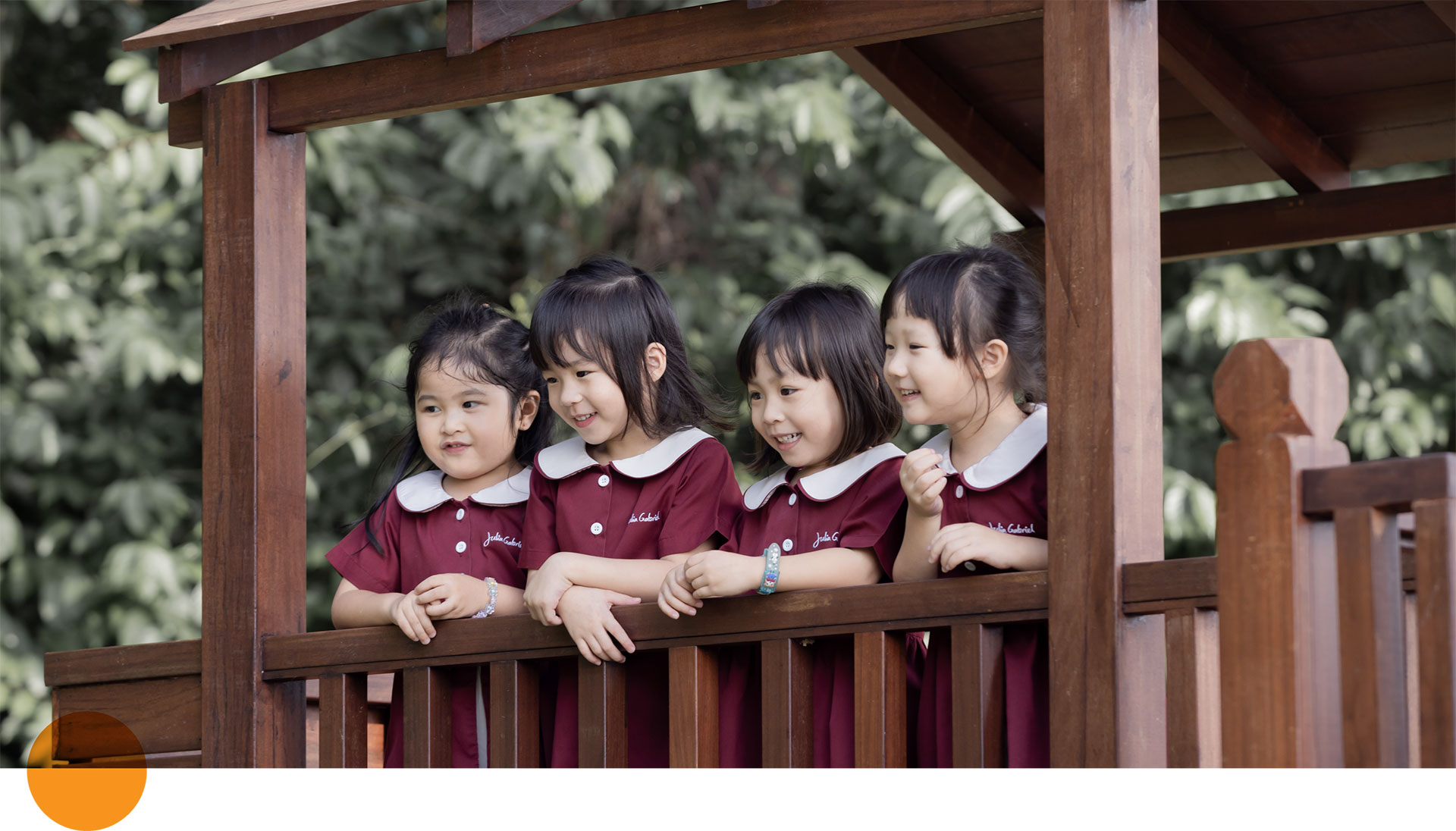
Preschool Education in Singapore: A Guide for New Parents
Choosing a preschool is one of the first major decisions you’ll make for your child—and in a city like Singapore, where early education is taken seriously and supported by a strong national framework, it’s a decision that can feel both exciting and overwhelming.
From understanding what makes preschool in Singapore unique to identifying the right fit for your family, this guide walks you through everything you need to know—from the national curriculum to what to look for in a learning environment.
Whether you’re just starting your journey into preschool educationor narrowing down your shortlist, being informed helps you make the best decision for your child’s early years.
What Makes Preschool Education in Singapore Unique?
Singapore’s preschool landscape is widely respected for its emphasis on quality, inclusivity, and holistic development. The sector is overseen by the Early Childhood Development Agency (ECDA), a government body that oversees the quality and regulation of preschools, ensuring that educators are well-trained and that programmes are developmentally appropriate.
Singapore’s approach combines high-quality teaching standards, comprehensive programmes, and supportive government initiatives, making it a model for early childhood education. One of the hallmarks of preschool education in Singapore is its holistic focus—supporting not just academic readiness but also social, emotional, and physical development.
High Standards and Strong Oversight
Preschools across Singapore operate under stringent regulations. The ECDA’s Singapore Preschool Accreditation Framework (SPARK) ensures that certified centres maintain consistently high standards in areas such as teaching and learning, curriculum planning, staff development, and safety.
The Preschool Curriculum Singapore Offers
One of the distinguishing features of preschool education in Singapore is the use of the Nurturing Early Learners (NEL) Framework, developed by the Ministry of Education (MOE). This framework serves as the national preschool curriculum, ensuring consistency and quality across ECDA-licensed centres.
This curriculum is built around play-based and inquiry-driven learning approaches. Rather than focusing on rote memorisation, the NEL framework encourages children to explore, ask questions, and develop a love for learning. It promotes development across six key learning areas: language and literacy, numeracy, motor skills, discovery of the world, social and emotional development, and aesthetics and creative expression.
Importantly, this framework also encourages schools to tailor their approach according to the unique needs of their students, allowing room for creativity, cultural inclusivity, and child-led learning.
Affordability and Government Support
The Singaporean government has invested significantly in making preschool education accessible to as many families as possible. Various subsidy schemes are in place, with a wide variety of offerings—from premium boutique preschools to larger chain schools—allowing families to choose according to their preferences and budgets.
For example, the Kindergarten Fee Assistance Scheme (KiFAS) and the Anchor Operator Scheme help reduce fees at selected centres. Families with Singaporean children in full-day childcare are also eligible for basic and additional subsidies, with amounts based on household income.
While fees vary across providers, here’s a general overview (as of 2025):
- MOE Kindergartens: Around S$160 per month for Singapore Citizens
- Anchor Operator Preschools: Capped at S$720 per month for full-day childcare
- Private Preschools: Range from S$1,500 to S$3,000 per month, depending on facilities and programme offerings
When budgeting, it’s advisable to factor in additional costs such as registration fees, uniforms, learning materials, and meals.
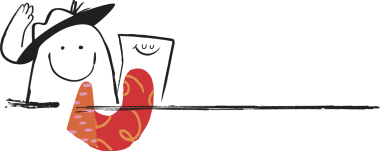
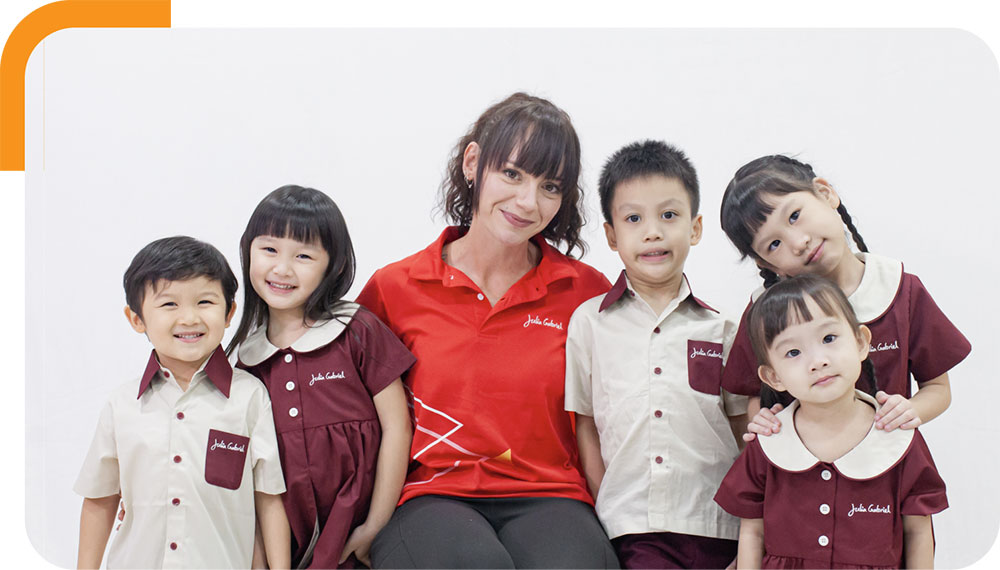
Preschool Programmes in Singapore
Singapore offers a wide variety of preschool programmes designed to support the developmental needs of children at different ages. These include:
- Infant Care (available at selected centres): For children aged 2 to 18 months
- Pre-Nursery / Playgroup: For toddlers aged 18 months to 2 years
- Nursery 1 & 2: For children aged 3 to 4 years
- Kindergarten 1 & 2: For children aged 5 to 6 years
Each programme builds on the last, following a preschool curriculum that supports growth in language, numeracy, motor skills, creativity, and social-emotional understanding.

How to Choose the Right
Preschool for Your Child
With so many choices available, how do you narrow it down? Here are some key considerations:
-
Location and Convenience:
A preschool close to home or your workplace makes drop-offs and pick-ups less stressful and supports a consistent daily routine for your child. -
Curriculum and Values:
Is the curriculum inquiry-based, academic-focused, or more holistic in approach? Does the school value creativity, empathy, and resilience? Look for schools whose educational philosophy aligns with your parenting style and aspirations for your child. -
Environment and Atmosphere:
A school visit is invaluable. Observe how children interact, how teachers engage with them, and whether the environment feels nurturing, safe, and inspiring. -
Teacher Qualifications and Stability:
Pay attention to the teachers—they are the heart of any great preschool. Ask about their qualifications, turnover rate, and how they support children’s learning and emotional development. A passionate, stable teaching team can make a difference in your child’s early school experience. -
Schedule a School Tour:
Arrange visits to your shortlist of schools. This allows you to meet the teachers and support staff, ask face-to-face questions, clarify doubts, and gauge whether the preschool meets your expectations.
The Julia Gabriel Difference: EduDrama® and Mindful Educators
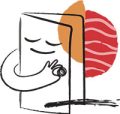
At Julia Gabriel Preschool, we do things a little differently—and parents love us for it!
We approach learning with imagination, rigour, and heart. Our unique EduDrama® methodology blends structured learning with creative expression, offering a nurturing environment where children feel confident to explore, experiment and express themselves. This approach combines the arts—such as drama and storytelling—with established educational practices to create a dynamic and engaging learning experience.
EduDrama® fosters more than just academic skills. It builds confidence, communication, empathy, and creativity. Through imaginative play and performance, children learn to collaborate, solve problems, and express themselves fluently in both English and Mandarin. It’s a process that nurtures each child’s voice and supports the development of clear, authentic communication.
Passionate, Mindful Educators
Our educators are at the heart of everything we do. At Julia Gabriel Preschool, teachers are both highly qualified and mindful practitioners, trained to be fully present, observant, and responsive to each child’s unique needs. They understand that young children thrive in relationships where they feel seen, heard, and valued.
We invest in continuous professional development, ensuring our educators stay current with best practices in early childhood education. They are selected for their academic qualifications as well as for their genuine passion for nurturing young minds and warm communication style. Our low teacher-to-child ratios allow them to develop meaningful relationships with each child, fostering trust and deeper engagement.
We believe in creating a learning environment where educators are reflective, calm, and attuned—because mindful teachers create mindful learners.
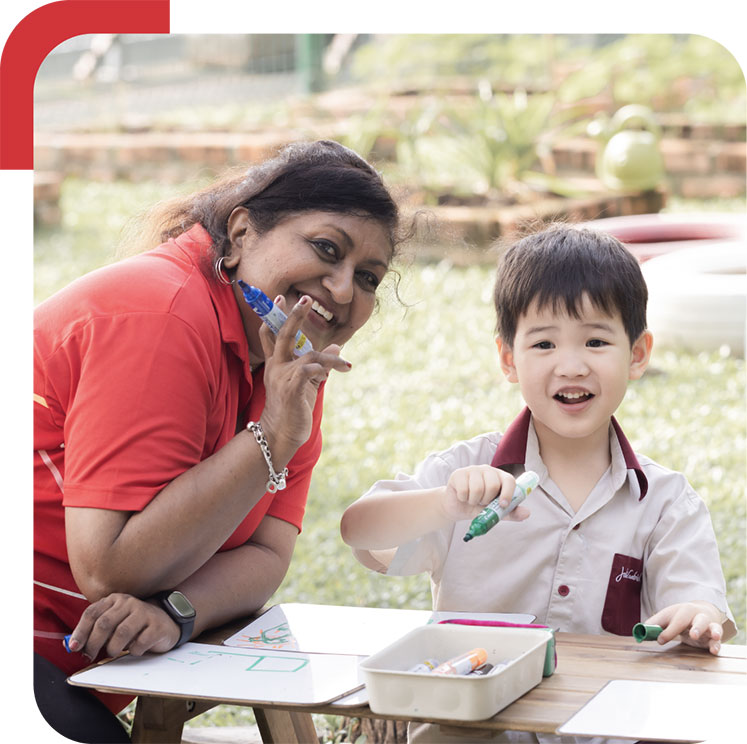

Why Families Choose Julia Gabriel Preschool
Parents often tell us how much they appreciate the care, creativity, and consistency of our approach. Some of the features they value most include:
-
A warm, inclusive atmosphere that feels like a second home
Our nurturing teachers create a safe and supportive environment where children feel confident to explore, express themselves, and build strong relationships. Small class sizes allow for close engagement, helping every child feel seen, heard, and valued. -
An engaging and expressive preschool curriculum that encourages a love for learning
Through the integration of drama, creative arts, and interactive activities, our curriculum brings learning to life. These experiences not only spark curiosity but also build communication skills and self-confidence from an early age. -
Strong bilingual foundations in both English and Mandarin
Our thoughtfully designed bilingual curriculum ensures that children develop effective communication skills in both languages. This prepares them well for primary school while fostering cultural appreciation and cognitive flexibility. -
Smaller class sizes and individual attention
With intentionally small groups, educators are able to give each child the personalised guidance and support they need to thrive. This close attention fosters both academic and emotional development. -
Thoughtful, compassionate educators who truly understand early childhood development
Our teaching team is made up of passionate, qualified professionals who bring deep expertise and empathy to the classroom. Their commitment to early childhood education ensures that every child receives thoughtful guidance, encouragement, and care. -
Positive parent testimonials
Many parents have shared how their children have grown in confidence, communication, and creativity since joining our preschool. Their feedback reflects the impact of our holistic, child-centred approach and our dedication to delivering meaningful early learning experiences.
With over 35 years of experience, Julia Gabriel Education is a trusted name in preschool education in Singapore, helping children grow into confident communicators and joyful learners.
Final Thoughts: Finding the Right Preschool in Singapore
Whether you’re just beginning your search or narrowing down your shortlist, the best preschool is the one where your child feels happy, secure, and inspired to learn—where their individuality is celebrated, and where the environment feels like a second home.
Thanks to Singapore’s strong educational frameworks and dedicated early childhood professionals, parents have access to a wealth of excellent options. We encourage you to visit, observe, and trust your instincts—when you walk into a place where children are thriving and teachers are genuinely engaged, you’ll know you’ve found the right fit.
We warmly invite you to book a visit to Julia Gabriel Preschool and discover why so many families choose us as their trusted partner in their child’s early learning journey.
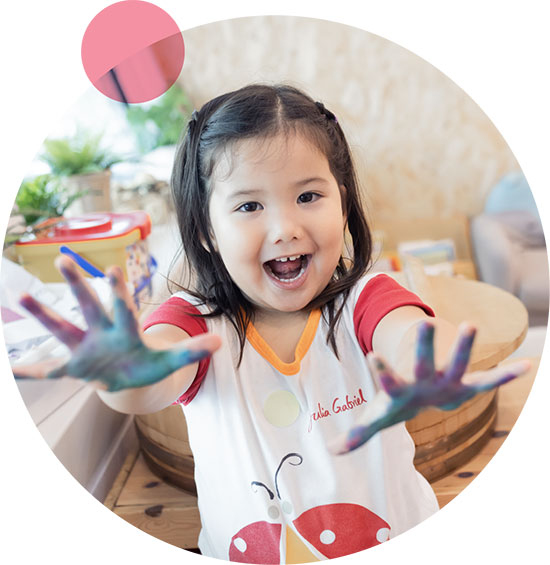
FAQs
on Preschool Education in Singapore

At what age should my child start preschool in Singapore?
Children in Singapore typically begin preschool between the ages of 18 months and 2 years, starting with playgroup or pre-nursery programmes.
Are there government subsidies available for preschool education?
Yes, the government offers a range of subsidies to help make preschool more affordable for families, based on household income levels. Singaporean children enrolled in full-day childcare programmes are eligible for both basic and additional subsidies.
How do I know if a preschool's curriculum is suitable for my child?
Take time to research the school’s teaching philosophy, visit the premises, and speak with educators. This will help you assess whether the curriculum aligns with your child’s personality, interests, and developmental needs.
How do I know if a preschool is of good quality?
Look for SPARK-certified preschools, which have met the quality standards set by ECDA. It’s also helpful to consider teacher qualifications, the school’s curriculum, and reviews or recommendations from other parents.
What is the NEL Framework?
The Nurturing Early Learners (NEL) Framework, developed by the Ministry of Education (MOE), guides preschools in delivering holistic and high-quality early childhood education in Singapore.
What is the difference between childcare centres and kindergartens?
Childcare centres typically offer full-day programmes suited to working parents, while kindergartens usually provide half-day sessions with a focus on academic readiness.
How important is the student–teacher ratio in preschools?
A lower student–teacher ratio allows for more individualised attention, helping educators better support each child’s learning and emotional development.
Can I visit the preschool before enrolling my child?
Absolutely. Visiting in person is highly recommended—it gives you the chance to observe the environment, ask questions, and get a genuine feel for the school’s culture.
What should I look for during a preschool visit?
Pay attention to the cleanliness and safety of the environment, the quality of teacher–child interactions, the availability of engaging learning materials, and whether the overall atmosphere feels warm and welcoming


